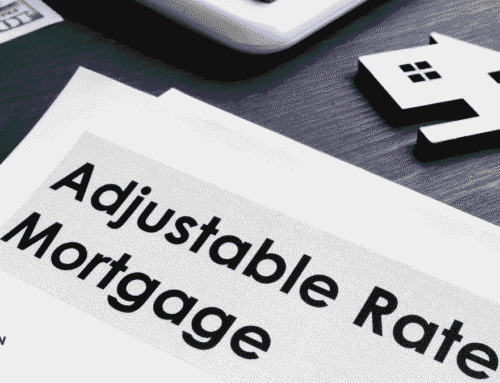DSCR vs Conventional Loan: How to Choose the Best Financing for Your Rental Property (2025 Guide)
DSCR vs Conventional Loan: How to Choose the Best Financing for Your Rental Property
Updated:
I’ve built a portfolio of 120+ U.S. rental properties over a little more than 10 years, and smart financing has been the cornerstone of scaling my cash flow and equity. In this guide, I’ll compare DSCR loans vs conventional loans in plain English so you can make confident decisions for your next real estate investment.
I’ll cover how each loan type qualifies you, typical LTV/DSCR and DTI ranges, rates and costs, property type eligibility (STRs, 2–4 units, 5+ units), and when to choose each. If you want to jump straight to pricing and modeling, see my DSCR Rates Guide and DSCR calculators.
DSCR vs Conventional at a Glance
| Criteria | DSCR Loan (Investment) | Conventional Loan (Investment) |
|---|---|---|
| Suitable For | Investors prioritizing property cash flow; portfolio scaling; STRs | Buyers with strong U.S. income/credit; 1–4 unit investments; some second homes |
| Underwriting Basis | DSCR = Rents / PITIA (no personal DTI) | DTI from W-2/returns; pricing add-ons (LLPAs) for non-owner-occupied |
| Income Verification | Lease or 1007 market rent; STR addendum or booking history if applicable | W-2s/tax returns, pay stubs, employment verification |
| Credit & Tradelines | Broad approval bands ~620–700+; U.S. credit not always required | U.S. credit history required; stronger scores price better |
| Max LTV (Purchase) | ~75% typical (tiered by DSCR & property type) | ~75–85% typical; MI if <20% down |
| Max LTV (Cash-Out) | ~70–75% common; lower with early seasoning/STRs | ~70–75% common; subject to cash-out rules/LLPAs |
| DSCR / DTI Threshold | ~1.15–1.25×+ DSCR tiers (better DSCR = better rate) | DTI often ≤45% (AUS & profile dependent) |
| Rates (Typical Ranges) | Usually higher than conventional; cash-out +0.25%–0.50%; ARM start < fixed; IO adds small premium | Generally lower; MI affects APR for <20% down; investment LLPAs apply |
| MI / Prepayment | No MI; prepayment penalty common (e.g., 3–5 years step-down) | MI required if <20% down; usually no prepayment penalty |
| Entity Vesting (LLC) | Often allowed (personal guarantee required) | Typically personal name for 1–4 units |
| Property Types | 1–4 units, condos, townhomes; STRs widely allowed; select 5+ programs | 1–4 units; STR eligibility varies by lender/HOA |
| Seasoning (Cash-Out) | Appraised value more common at ~6–12+ months; early refis may use cost basis | Appraised value typically used after standard waiting periods |
| Closing Speed | Often faster; streamlined docs (business-purpose) | Can be slower; more borrower documents & conditions |
| Documentation Burden | Light (property file, reserves, ID/entity) | Heavier (income docs, tax returns, employment); MI adds steps |
| Foreign-National Friendly? | Yes—common overlays: KYC/OFAC, reserves; U.S. credit may not be required | Limited; usually needs U.S. credit/income; specialized programs only |
JOIN MY VIP PRIORITY INVESTOR LIST
Get the Best DSCR Loan Deals and Off-Market DSCR-Ready Investment Properties in Your Inbox Every WeekYES! ADD ME TO THE PRIORITY INVESTOR LIST
Key Differences for Investment Properties
- Underwriting focus: DSCR qualifies the property (rents vs PITIA). Conventional qualifies the borrower (W-2s/returns, DTI, U.S. credit). Great for self-employed or real estate investors with low taxable incomes/weak tax returns.
- Cost structure: DSCR usually has no Mortgage insurance (MI) but often includes a prepayment penalty (e.g., 3–5 year step-down). Conventional can offer lower rates, but MI applies if you’re putting less than 20% down.
- Entity & title: DSCR commonly supports LLC vesting with a personal guarantee. Conventional investment loans are typically in a personal name.
- Portfolio scaling: DSCR lenders are more flexible on property count/DTI. Conventional may hit caps and add LLPAs (pricing add-ons) on investments. I have $3.2 million in DSCR loans and an on-paper taxable income of less than zero!
- Speed & paperwork: DSCR can close faster with fewer borrower docs. Conventional requires full income documentation and MI steps if applicable.
- Cash-out rules: DSCR cash-out usually caps ~70–75% LTV with seasoning overlays (how long you’ve owned the property); early refis may use cost basis instead of appraised value. Conventional applies standard cash-out timing and investment loan level pricing adjustment (LLPA).
- Property types: DSCR widely supports single family, townhomes, short-term rentals (STRs) and 2–4 units (with some 5+ unit programs). Conventional supports 1–4 units; STR. Condo rules vary. I don’t buy condos!
- Consider Hard Money: If you’re buying a property in need of renovation, you should also weigh the costs and benefits of a DSCR loan vs hard money loan as your primary purchase financing.
Quick tip: If you want LLC vesting, plan to use a DSCR loan. If you’re optimizing purely for lowest nominal rate and have strong U.S. income/credit, compare against today’s conventional-vs-DSCR pricing and model your hold period. Check out my DSCR loan case study where we used a DSCR loan to purchase 2 duplex buildings in Cleveland, Ohio.
Which Is Cheaper? Rates, MI, Fees & Prepayment
The “cheaper” option really depends on your hold period and structure. Conventional rates are often lower, but MI (if <20% down) raises your effective cost. DSCR avoids MI, yet rates are typically higher, and many programs include a prepayment penalty that may matter if you plan to sell/refi within 3–5 years. Understanding your long-term plan ahead of time will help to define the most appropriate financing strategy. There are also some difference between the interest rates on fixed rate vs ARM mortgages, so make sure you model different scenarios and loan types.
For example, I spoke to a Canadian investor recently. He purchased a house in Dayton, Ohio using a private money loan. The time has now come for him to refinance into a longer term product, but the appraised value of the property and his Canadian residency limits his options. He had assumed he’d be able to get an 80% LTV conventional loan. In reality, his best option will be a 70% LTV DSCR loan. Now he’s going to have to put extra money into the deal to pay back his private lender in full, and his property won’t cash flow as well as he thought. Had he planned ahead and understood his options, he may well have made very different decisions.
Conventional vs DCSR - Cost Drivers to Compare
| Driver | DSCR Loan | Conventional (Investment) |
|---|---|---|
| Rate & points | Typically higher; ARM start often lower than 30-yr fixed; IO adds a small premium; discount points available to buy down. | Typically lower; investment LLPAs apply; discount points can reduce rate. |
| Cash-out premium | Usually prices higher than rate-and-term (often ~+0.25%–0.50%); some programs cap LTV lower. | Prices higher than purchase; investment cash-out LLPAs apply; LTV caps vary by agency/lender. |
| Monthly add-ons | No MI; PITIA can be lowered with ARM/IO to improve DSCR. | MI required if <20% down; cancels around 78–80% LTV or via refi/recast. |
| ARM index & caps | Most programs reset to SOFR/Term SOFR + margin with periodic and lifetime caps. | Check ARM terms (5/6, 7/6, 10/6); many agency ARMs reset off SOFR + margin with caps. |
| Interest-Only (IO) | Common (e.g., 5–10 yrs IO); lowers payment/raises DSCR; small pricing premium vs amortizing. | Rare for conventional 1–4 unit investments; most loans amortize from month one. |
| Exit costs / prepay | Prepayment step-down common (e.g., 5-4-3-2-1 or 3-2-1). Match to your hold plan. | Usually no prepayment penalty on conforming conventional loans. |
| Hold period fit | Strong for 3–10+ year holds if prepay aligns; IO/ARM can maximize early cash flow. | Strong for long holds seeking the lowest fixed rate; MI may cancel as equity builds. |
| Points break-even | Break-even (months) ≈ points cost ÷ monthly savings. Buy points only if you’ll hold past break-even and prepay allows. | Same math; consider MI duration when comparing true APR vs DSCR structures. |
Rule of thumb: For short/medium holds, compare MI cost (conventional) vs prepay risk (DSCR). For long holds, compare total interest + points and consider whether MI will cancel. Use my DSCR calculator to model fixed vs ARM and interest-only vs amortizing side-by-side.
For live ranges and how lenders are pricing this week, see the DSCR Rates Guide. If you’re considering a cash-out refinance, read the DSCR Cash-Out Refinance Guide for seasoning rules and LTV caps.
Qualifying Requirements & Docs (Checklist)
Here’s what most underwriters look for on investment property files. Exact overlays vary by lender and state, so use this as a working checklist before you request quotes. For me, getting organized and having all my documents together before I go for a pre-approval has helped to streamline the process. I can usually get a pre-approval on a DSCR loan within 24 hours.
DSCR vs Conventional — Typical Qualifying Requirements
| Item | DSCR Loan (Investment) | Conventional (Investment) |
|---|---|---|
| Income Method | Market rent via lease or 1007 appraisal; STR addendum or booking history if applicable | W-2s/tax returns, pay stubs, VOE; rental income often haircut per agency rules |
| Qualifying Threshold | DSCR tiers ~1.15–1.25×+ (stronger DSCR improves pricing and max LTV) | DTI typically ≤45% (AUS & profile dependent) |
| Credit | Broad approval bands ~620–700+; U.S. credit may not be required (foreign-national overlays apply) | U.S. credit history required; stronger scores price better |
| LTV / Down | Purchase up to ~75% (varies by DSCR & property type); cash-out ~70–75% typical | Purchase ~75–85%; cash-out ~70–75%; MI if <20% down (cancels ~80% LTV or via refi) |
| Reserves | ~3–12 months PITIA typical; higher for STRs, 5+ units, jumbo, foreign-national files | ~2–6 months typical; higher with multiple financed properties |
| Seasoning (Cash-Out) | Appraised value more common at ~6–12+ months; earlier refis may be limited to cost basis with tighter caps | Standard agency waiting periods; appraised value used after required periods |
| Documents to Gather | ID; entity docs (LLC/operating agreement); insurance quote; tax bill/estimate; lease or 1007; payoff; proof of funds/reserves; STR addendum if applicable | ID; income docs; asset statements/reserves; leases; insurance/tax bills; HOA docs if applicable |
| Entity / Title (LLC) | Often allowed with personal guarantee; confirm state/title/insurance requirements | Typically personal name for 1–4 units; entity vesting limited |
Pro move: Assemble your file before you price shop. Use my DSCR Pre-Approval Checklist, then get 2–3 quotes on the same day for apples-to-apples comparisons.
Property Types: STRs, 2–4 Units, 5+ Units
Eligibility and pricing vary based on the type of property you’re buying. Here’s how DSCR and conventional lenders usually handle short-term rentals (Airbnb), small multifamily (1 to 4 units), and larger properties.
Typical Treatment by Property Type (Investment)
| Property Type | DSCR Loan | Conventional Loan |
|---|---|---|
| Single-Family / Condo / Townhome | Widely eligible; DSCR tiers affect LTV/rate; condos OK (condotel rules vary). | Eligible for investment; condo/HOA overlays apply; MI if <20% down. |
| 2–4 Units | Common; LTV and DSCR tiers vary; reserves often higher than SFR. | Eligible; pricing add-ons for multi-unit; rental income treatment per agency rules. |
| Short-Term Rentals (STRs) | Widely allowed; may require STR addendum, market-rent study or booking history; pricing uplift typical. | Varies by lender/HOA/condo rules; some will not underwrite STR income directly. |
| 5+ Units / Mixed-Use | Select programs (DSCR/Non-QM/small-balance commercial); bespoke underwriting. | Generally not conventional; consider small-balance commercial or portfolio loans. |
| Entity Vesting (LLC) | Often allowed (with personal guarantee); confirm state/title/insurance requirements. | Typically personal name for 1–4 unit conventional investments. |
Quick tip: For STRs or tight cash flow, consider ARM vs fixed and/or interest-only vs amortizing to see the impact on your DSCR. Start with my guide in how to improve your DSCR for a rental property.
When to Choose DSCR vs Conventional (Scenarios)
You can use this quick matrix to map your situation to the most practical loan path. Then price both options on the same day for an apples-to-apples decision.
Decision Matrix — Common Investor Scenarios
| You Are / Situation | Your Goal | Constraints | Likely Fit | Why |
|---|---|---|---|---|
| U.S. investor, W-2 income, strong credit | Lowest long-term rate on a 1–4 unit rental | Can put 20–25% down; DTI within limits | Conventional | Often lowest rate; MI can be avoided/cancels; no prepayment penalty. |
| U.S. investor, portfolio scaling quickly | Close fast; limit DTI friction | Multiple properties; DTI tight | DSCR | Underwrites the property (DSCR), not personal DTI; flexible on property count; streamlined docs. |
| STR (Airbnb) buyer | Maximize cash flow; qualify with STR income | HOA/condo or city STR rules | DSCR (often) | Programs accept STR addendum/booking history; IO/ARM can improve DSCR. |
| Value-add BRRRR refi | Cash-out to recycle capital | Seasoning; appraised value vs cost-basis limits | DSCR (cash-out) | Common cash-out path at ~70–75% LTV; match prepay to your hold plan. |
| House-hack / second home | Lower rate; future rental | Owner-occupancy rules; MI if <20% down | Conventional | Agency pricing benefits; no DSCR prepay; MI may cancel later. |
| Thin U.S. credit / no W-2s | Investment purchase or refi | Can document rents; reserves available | DSCR | Qualification via property cash flow; U.S. credit may not be required. |
| 2–4 units with strong personal income | Lowest fixed cost over long hold | High DTI sensitivity; MI if <20% down | Conventional or DSCR | Price both: conventional may win on rate; DSCR may win if DTI is tight. |
| 5+ units small-balance | Long-term fixed or hybrid | Commercial underwriting | DSCR/Non-QM small-balance commercial | Specialized programs beyond standard conventional 1–4 unit rules. |
How to decide fast: Quote both paths the same day, model ARM vs fixed and IO vs amortizing with the DSCR calculator, and factor MI (conventional) vs prepay (DSCR) over your hold period.
Foreign-National Considerations (Skip if U.S.-Based)
This section is for non-U.S. citizens and non-residents investing in U.S. rental property. If you’re U.S.-based, you can skip this. I’m not a U.S. citizen (I’m British), and most of my clients are overseas buyers building rental property portfolios in the U.S. The loan terms we get as foreign nationals are a little different, but there are still lots of options available depending on what you are buying, and your current situation.
Foreign-National Overlays — What Usually Changes
| Area | DSCR Loan | Conventional Loan |
|---|---|---|
| Documentation | Passport/visa, entity docs (LLC if used), source of funds/proof of reserves, KYC/OFAC; lease or 1007; STR addendum if applicable. | U.S. income/credit documentation typically required; fewer lenders offer foreign-national programs for investment property. |
| Credit / SSN / ITIN | U.S. credit often not required; some programs accept no SSN or ITIN files with overlays and pricing uplift. | Usually requires U.S. credit score and SSN; ITIN options for investment are limited and stricter. |
| LTV & Pricing | Purchase ~70–75%; cash-out ~65–70% typical; pricing uplift vs U.S. citizen files. | LTV often tighter; pricing add-ons common; MI usage can be limited for foreign-national borrowers. |
| Reserves | Often higher (e.g., 6–12+ months PITIA); more for STRs, 5+ units, or jumbo balances. | Several months typical; higher with multiple financed properties or risk factors. |
| Banking & Transfers | International wires accepted; U.S. bank account typically required for autopay/escrows; strict OFAC checks. | U.S. bank account commonly required for autopay/escrows; wire procedures vary by lender/settlement. |
| Entity Vesting (LLC) | Usually allowed with personal guarantee; confirm state/title/insurance requirements. | Typically personal name for 1–4 unit conventional; entity vesting limited. |
| Closing Logistics | Remote/mail-away or RON sometimes available; plan extra time for KYC and currency movement cut-offs. | May require in-person or domestic notarization; timelines can be longer due to additional documentation. |
Quick tip for non-U.S. investors: Start with a Foreign-National DSCR Loan for the fastest approvals. If you file U.S. taxes with an ITIN, you can compare with other options in my Foreign National Mortgage Guide. Make sure you have proof of funds, and entity (LLC) docs before going rate shopping.
Mini Case Studies (Illustrative)
Case Study 1 — DSCR Purchase (STR)
- Purchase: $450,000 (LLC vesting); Loan: 75% LTV (~$337,500)
- Structure: 5/6 ARM, interest-only 10 years; Start rate priced slightly below 30-yr fixed
- Rents/Revenue: $4,200/mo (STR); PITIA (IO): ~$3,150 → DSCR ≈ 1.33×
- Why DSCR? Borrower has variable income and thin U.S. credit; needed LLC vesting and speed.
Case Study 2 — Conventional Duplex (2–4 Units)
- Purchase: $320,000; Down: 25%; Loan: $240,000 (no MI at ≥20% down)
- Structure: 30-yr fixed; no prepayment penalty
- Rents: $3,000/mo; Lower nominal rate → strongest long-term cost for W-2 borrower
- Why Conventional? Strong U.S. income/credit; doesn’t need LLC vesting.
Note: Numbers are simplified examples for education. Actual pricing/terms vary by DSCR, LTV, property type, state, and lender overlays. Model your deal in the DSCR calculator and compare quotes the same day.
Calculators & Tools
- DSCR Calculators — model DSCR, ARM vs fixed, and interest-only vs amortizing
- DSCR Rates Guide — live ranges and pricing drivers
- Best DSCR Lenders — shortlist to get 2–3 quotes on the same day
- Pre-Approval Checklist — docs/reserves to assemble before you price shop
- Cash-Out Refinance Guide — seasoning rules and max LTV caps
Getting Started: Next Steps
- Define your hold period and exit plan (sell, refi, or long hold).
- Run numbers: fixed vs 5/6 ARM, amortizing vs interest-only, MI (conventional) vs prepay (DSCR).
- Assemble your file using the Pre-Approval Checklist.
- Get 2–3 quotes on the same day (standardize LTV, structure, prepay) from your lender shortlist.
- Lock the loan that best matches your plan, not just the lowest headline rate.
Reminder: DSCR loans are business-purpose financing for investment property. Policies and pricing vary by lender and state—always verify on your written Loan Estimate and lock sheet.
GET PRE-APPROVED FOR THE BEST DSCR LOAN RATE
Start your real estate investment journey today, and get pre-approved for the Best DSCR Loan Interest Rates from market leading lenders!
“Having personally invested in over 120 US rental properties from overseas, I know the true value of getting the right advice and support.
David Garner – Cashflow Rentals

GET PRE-APPROVED FOR THE BEST DSCR LOAN INTEREST RATES TODAY!
Start your real estate investment journey today get pre-approved for the best DSCR loan interest rates from market leading lenders!
“Having personally invested in over 120 US rental properties from overseas, I know the true value of getting the right advice and support.
David Garner – Cashflow Rentals
FAQs
Is a DSCR loan better than a conventional loan for rental property?
It depends on your profile and plan. DSCR wins when you want LLC vesting, have limited W-2 income, or need speed and portfolio flexibility. Conventional often wins on lowest nominal rate for W-2 borrowers with 20–25% down and long holds.
Are DSCR rates higher than conventional—by how much?
Typically yes. Expect DSCR to price higher than conventional, with cash-out adding roughly 0.25%–0.50%. Structure matters: ARMs may start lower than 30-year fixed, and interest-only usually carries a small premium. See today’s ranges in the DSCR Rates Guide.
Can I use an LLC? What about prepayment or PMI?
DSCR commonly allows LLC vesting with a personal guarantee, but many programs include a prepayment penalty (e.g., 3–5 years). Conventional 1–4 unit investment loans are usually in a personal name; PMI may apply if you put <20% down, but there’s normally no prepayment penalty.
Do DSCR and conventional loans allow short-term rentals and 2–4 units?
DSCR widely supports STRs and 2–4 units (with program-specific rules). Conventional supports 1–4 units, but STR eligibility varies by lender/HOA. For tight cash flow or STRs, use my DSCR calculator to compare payment structures.












